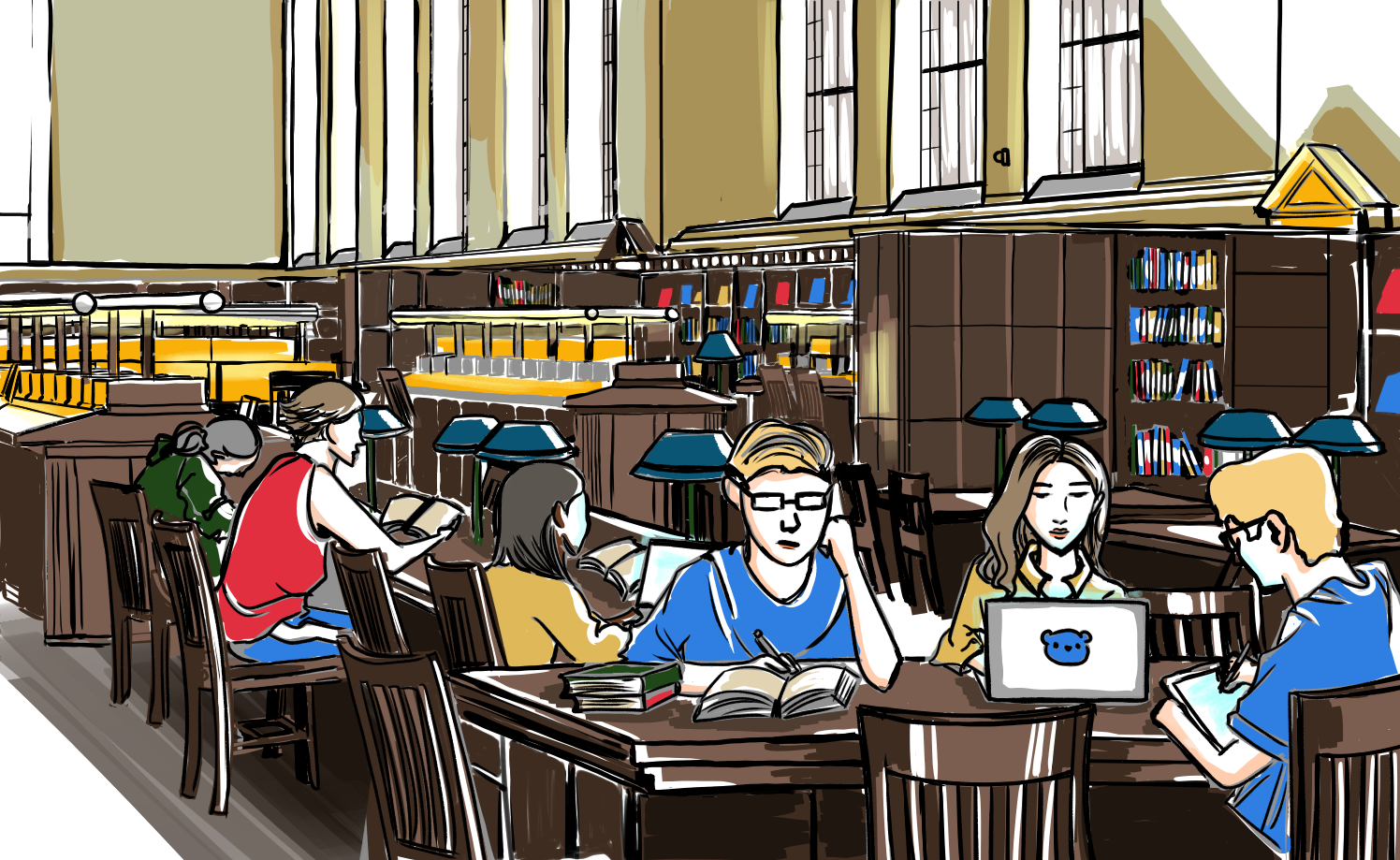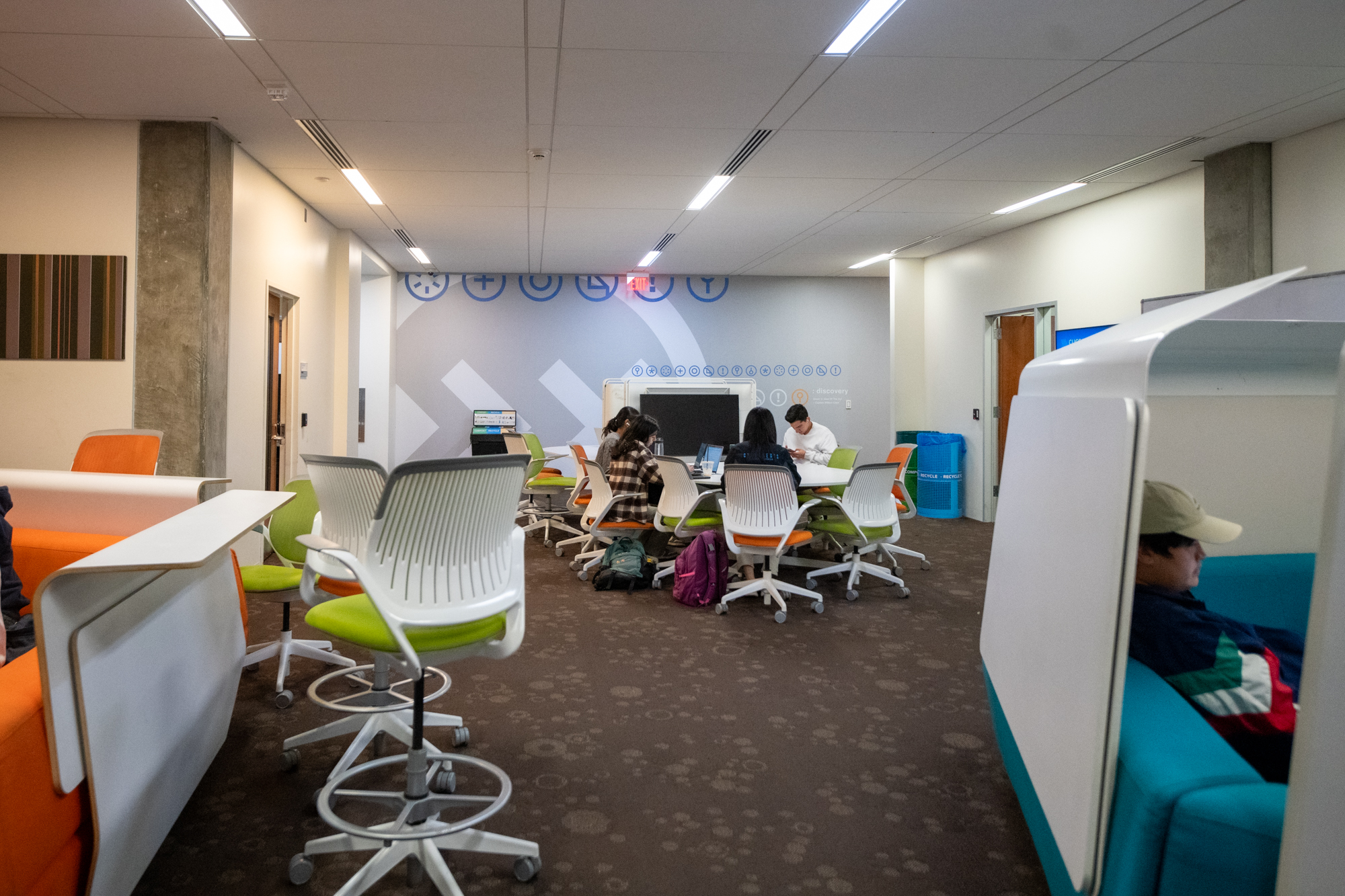The Quad: Students transition their study habits as they start college

(Photo illustration by Irisa Le/Daily Bruin)
By Donya Hassanshahi
Jan. 31, 2025 6:58 p.m.
This post was updated March 2 at 9:20 p.m.
The abrupt transition from high school to college may leave Bruins reevaluating their study habits.
Bradley Bohall, a third-year biology student, said his habit of last-minute cramming was not sustainable for the rigorous quarter system in college. Also, a runner in his free time, Bohall said his approach to studying began to mirror his marathon training.
“I think of it like you wouldn’t train for a marathon by running really hard the first three days before your marathon,” Bohall said. “Instead, you would take your time and slowly build up to it with easy miles.”
Many students may share the experience of adjusting to a sudden academic transition from high school to college. Julia Morrow, a second-year business economics student, said her teachers in high school provided more support and study materials, which guided her studying. Since starting college, she said she has had to become more self-driven when managing coursework because she realized students are expected to take initiative in how they study.
New academic environments and responsibilities are some changes that come with starting college, according to Azusa Pacific University. For example, many high schools operate on a semester system, while colleges such as UCLA use a quarter system, which involves a relatively shorter duration of time to master college-level material.
To assist in this academic transition, UCLA offers services through on-campus resources and residential life. Academic counseling is available for all demographics of students, including student-athletes and honors students. Tutoring sessions for the 2024-2025 school year cover numerous subject areas ranging from STEM to the humanities. Additionally, one-on-one tutoring sessions with the Undergraduate Writing Center allow students to advance their writing skills to the college level.
While schools may offer academic resources, students may turn to social media for help. In a study that surveyed 400 medical students, 50% of students said they used social media as a resource for research and course preparation, while 71.5% use media to do assignments, according to the National Library of Medicine.
One popular method on social media is the Pomodoro Technique, which involves studying in 25-minute increments with short breaks in between. On Instagram, the hashtag “#pomodorotechnique” has been tagged in over 42,000 posts.
Naomi Stephen, an education doctoral student, said she found the Pomodoro Technique effective because she was able to improve her efficiency by training her brain to allocate and complete tasks within a given time frame.
A study conducted in the British Journal of Educational Psychology found that students who took systematic breaks were proven to complete work more efficiently than those who took breaks of their own accord. Furthermore, the International Research Journal of Management, IT & Social Sciences found that nearly 82% of study participants increased their pre-test scores after implementing this method.
On the other hand, Bohall said he utilizes the spaced-practice method, where he distributes his studying over a long period of time rather than cramming information during one practice period. This method has also been popularized on social media, with one particular YouTube video on how to practice this method reaching over 3.8 million views.
A study published in the National Library of Medicine found that students who were repeatedly tested during the initial period of studying recalled 21% more information than those who simply reread a passage multiple times, while a study published in the journal Current Directions in Psychological Science found that retention is increased by having more study periods rather than condensing material into one session.
Productivity is also driven by the environment.
Studying in a physically uncomfortable space can be distracting and negatively affect a student’s learning ability compared to an environment with natural light, limited noise and tidy surroundings, according to the Universities and Colleges Admissions Service. Furthermore, changing environments from time to time, getting at least eight hours of sleep each night, listening to music and snacking on foods can enhance brain function, according to the University of St. Augustine for Health Sciences.
Adam Janik, a first-year physics student, said his study preferences have changed since coming to college.
“The thing that is differing is the amount of studying, and the place where I study because in high school I used to study a lot at home and now I prefer to study outside in libraries or cafes,” Janik said.
In addition to 12 libraries across campus, Bruins can reserve individual and group study rooms in their dormitories and university apartments, as well as find their ideal study environment in various other spaces on campus and around Westwood.
Aside from self-studying, Stephen added that being a teaching assistant after having completed both her undergraduate and postgraduate degrees at UCLA has helped her appreciate the range in students’ learning styles during the classes she teaches.
For Bruins tackling the academic rigor at UCLA, Stephen said students should remind themselves to not be discouraged when challenged by coursework. Morrow added that maintaining a positive mindset when it comes to studying has become important for her.
“There are days where no matter what I do, I can’t do it,” Morrow said. “I try, but I know it’s not going to happen, and so I just learned to be patient with myself.”



